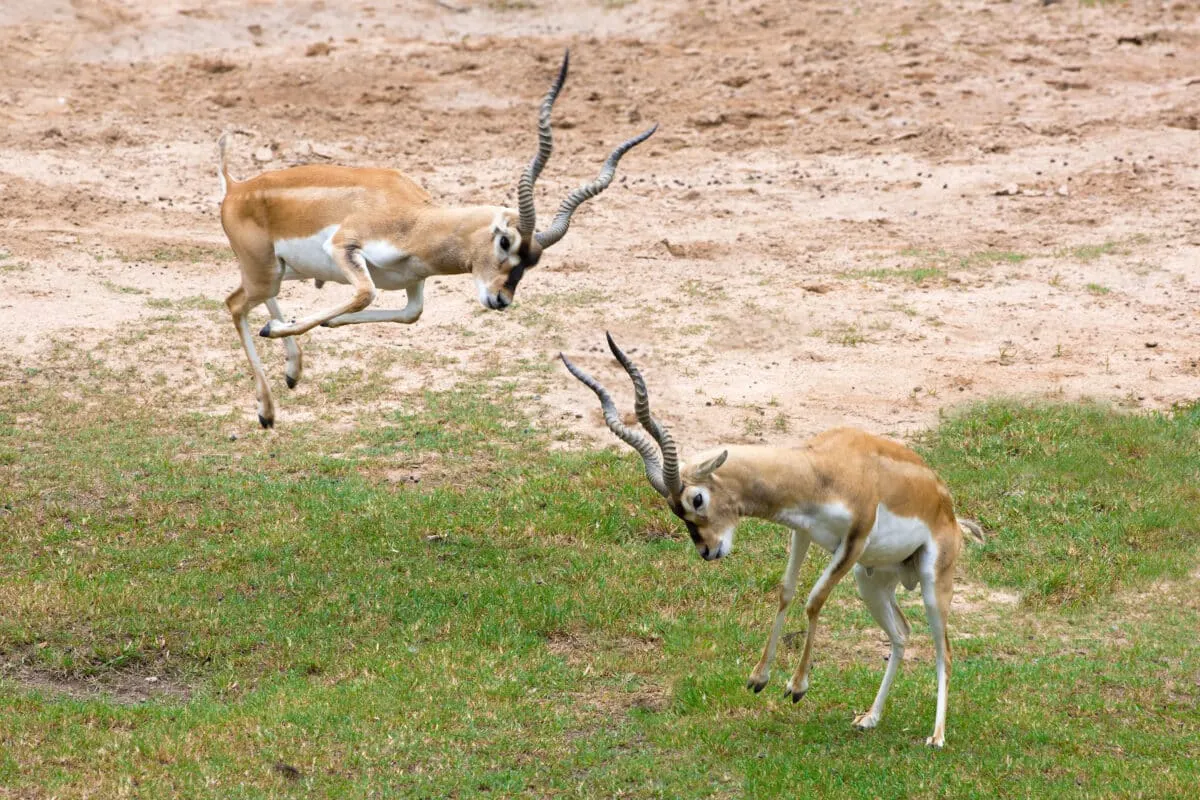Welcome to the Ultimate Guide to Gorilla vs. Blackbuck! Nature’s beauty is displayed in many ways, and the animal kingdom is one of them. The diversity and complexity of interactions between different species make it all the more fascinating.
One such interaction begs the question is the confrontation between the Gorilla and the Blackbuck. Gorillas are among the most intelligent and formidable primates, and the Blackbuck is an antelope species known for its speed and agility.
This article will explore the physical characteristics, habitat, behavior, and overall interaction between the Gorilla and the Blackbuck.
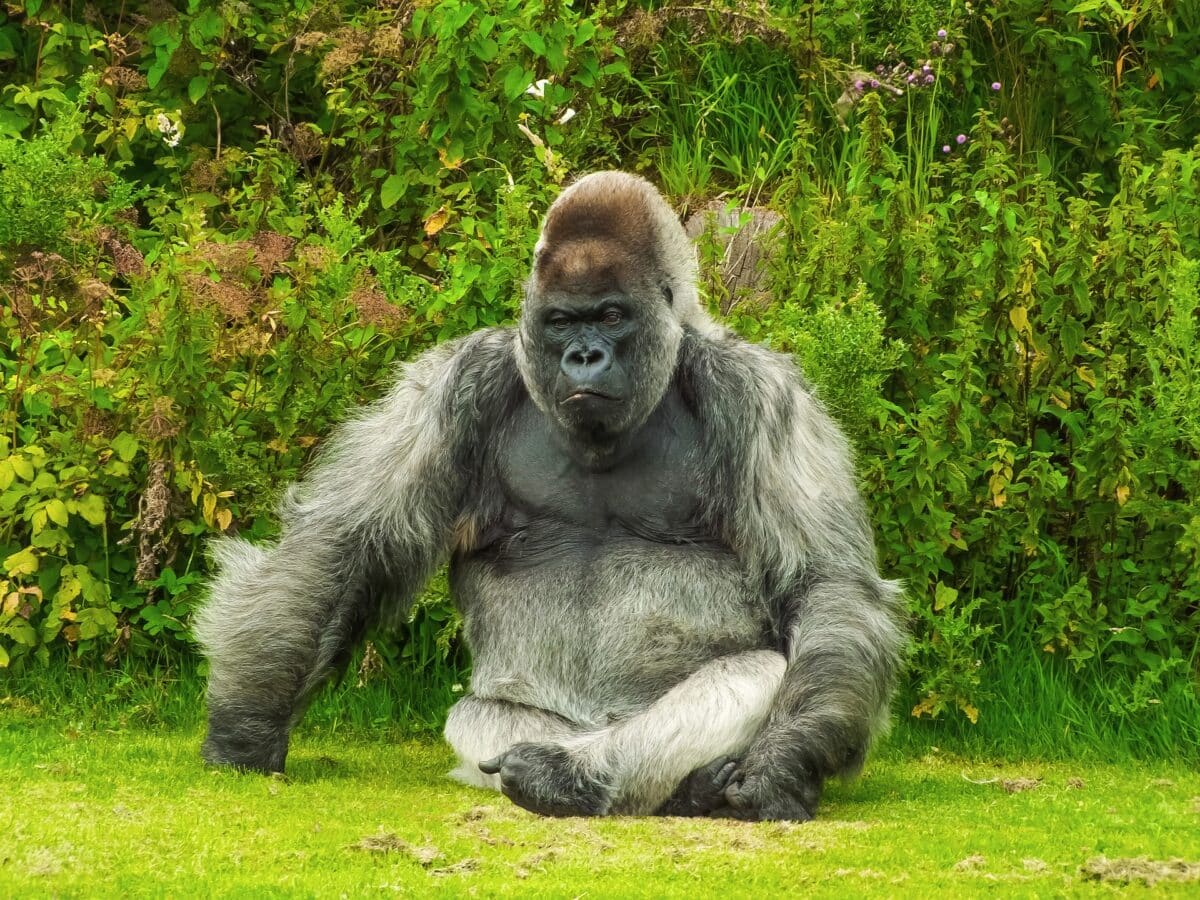
Want to jump ahead? Click below
Comparison Table
| Aspect | Gorilla | Blackbuck |
|---|---|---|
| Species | Gorilla | Blackbuck (Antelope cervicapra) |
| Habitat | Forests and lowland swamps | Grasslands and open plains |
| Location | Central and Western Africa | Indian subcontinent |
| Diet | Herbivorous | Herbivorous |
| Social Structure | Live in groups called troops | Form small herds or bachelor groups |
| Physical Features | Large, muscular bodies with strong arms | Slender bodies with long, spiraled horns |
| Coat Color | Black with silver or brown back | Light brown to reddish-brown |
| Threats | Habitat loss, poaching, diseases | Habitat loss, predation |
Physical Characteristics
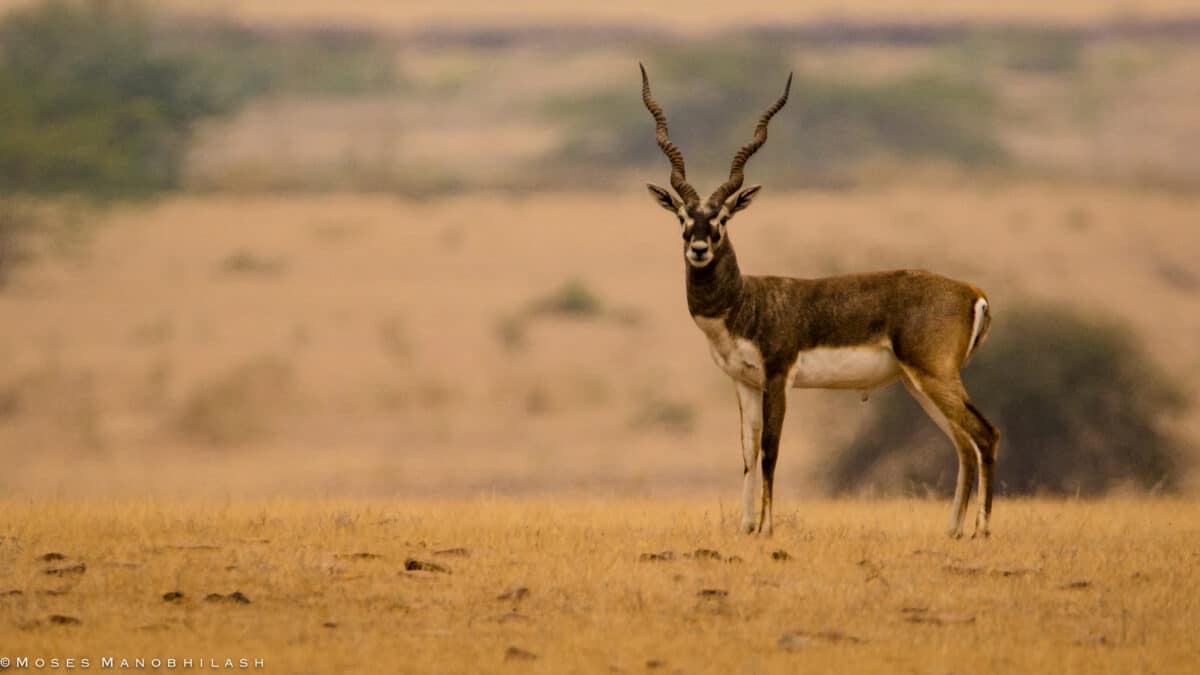
Gorillas
Gorillas are the largest living primates and the closest living relative to humans. They have a massive muscular structure, with males weighing over 300 pounds and a height of around 5 feet 6 inches.
Moreover, Gorillas have an athletic body, broad chests, and massive arms capable of exerting tremendous strength. Their hands have opposable thumbs, allowing them to grasp and manipulate objects with great dexterity.
Blackbucks
In contrast, the Blackbuck is a medium-sized antelope species, with males weighing around 90-110 pounds and having a height of approximately 2 – 3 feet. They have a slender body, a narrow chest, and thin legs built for speed and agility. Blackbucks have a small head with a pair of long, spiral horns.
Habitat
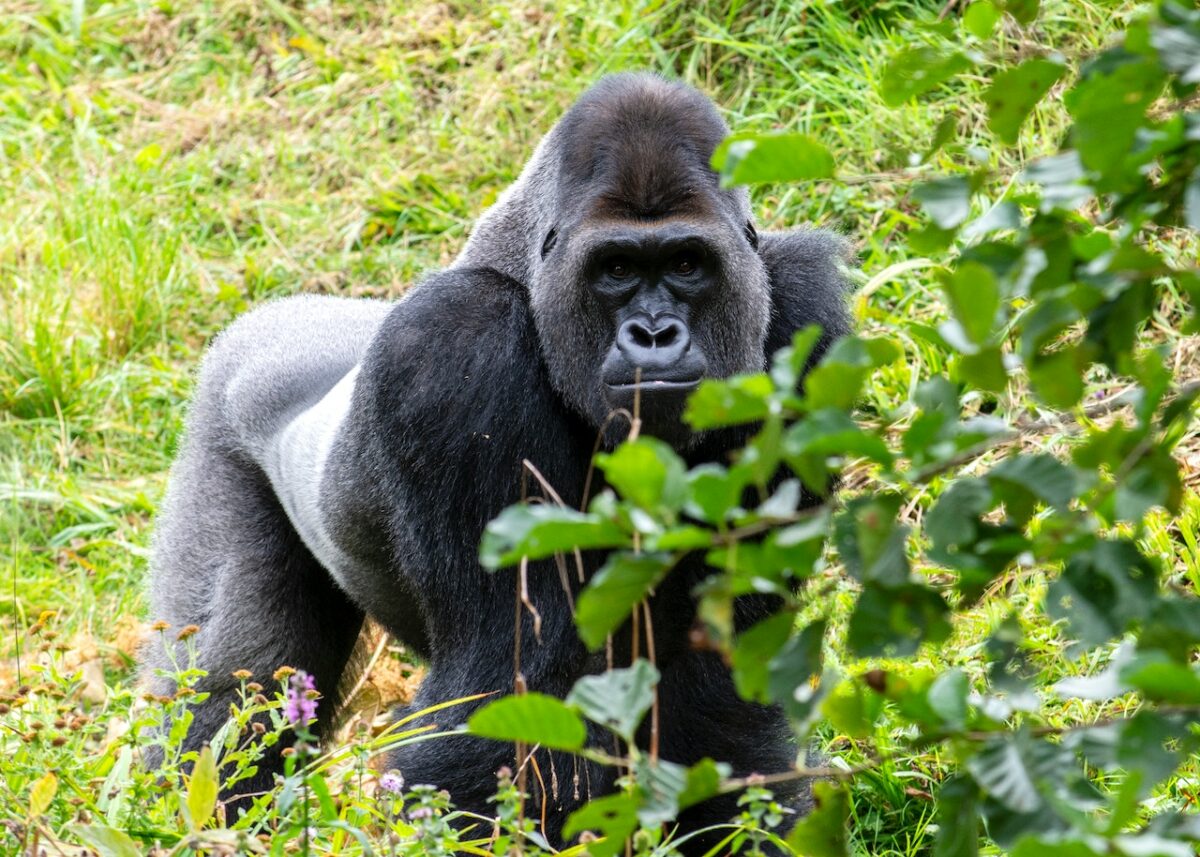
Gorillas
Gorillas are found in sub-Saharan Africa, primarily in dense rainforests, swamps, and montane forests. They are well-adapted to harsh climates and can withstand extreme temperatures. Gorillas live in troops of around 5-30 individuals and are highly social animals.
Blackbucks
Blackbucks are found in the Indian subcontinent, primarily in grasslands and plains. They prefer open spaces and are well adapted to arid and semi-arid regions. Blackbucks live in herds, with an average herd size of 20-30 individuals.
Behavior
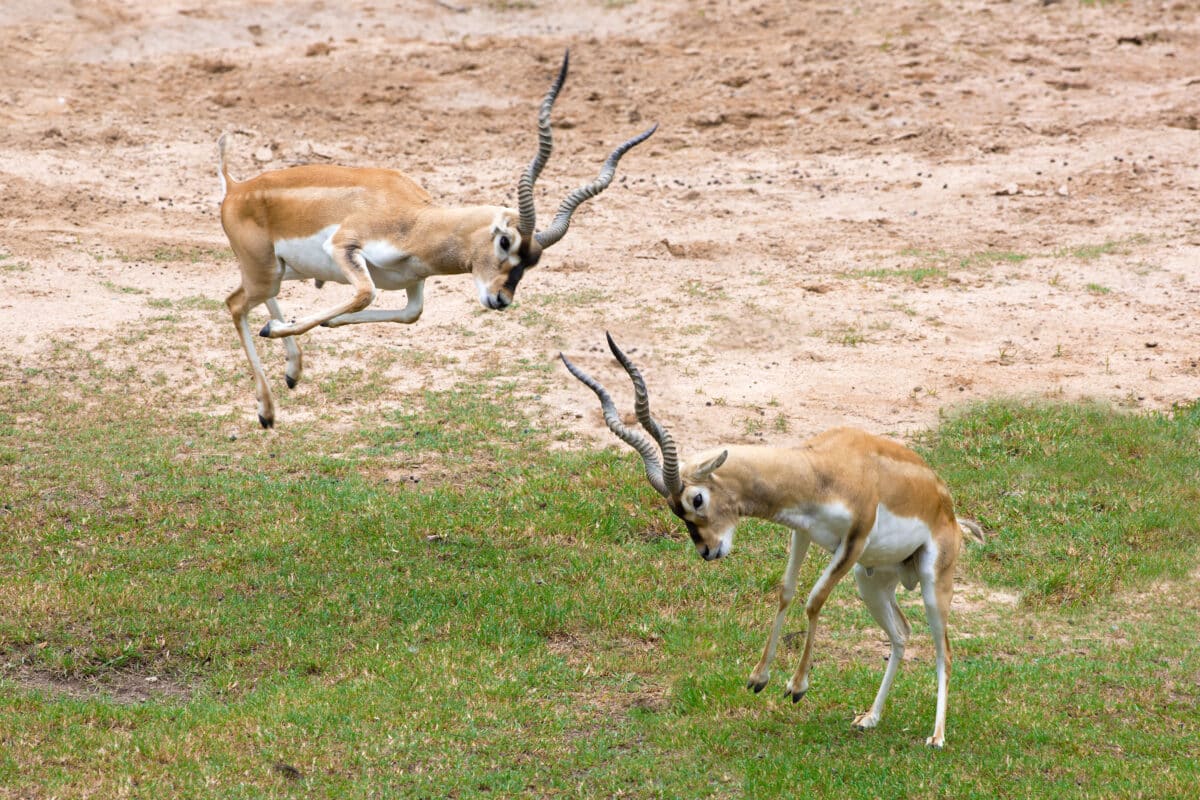
Gorillas
Gorillas are highly intelligent and display complex behavior patterns. They communicate with each other using a combination of vocalization, body language, and facial expressions. Gorillas are mainly herbivorous and have a varied diet of leaves, fruits, and insects.
Blackbucks
They are incredibly agile and can run at high speeds, reaching up to 50 miles per hour. Blackbucks are known for their lek mating system, where males engage in aggressive displays, including head-to-head combat, to attract females.
Diet and Nutrition
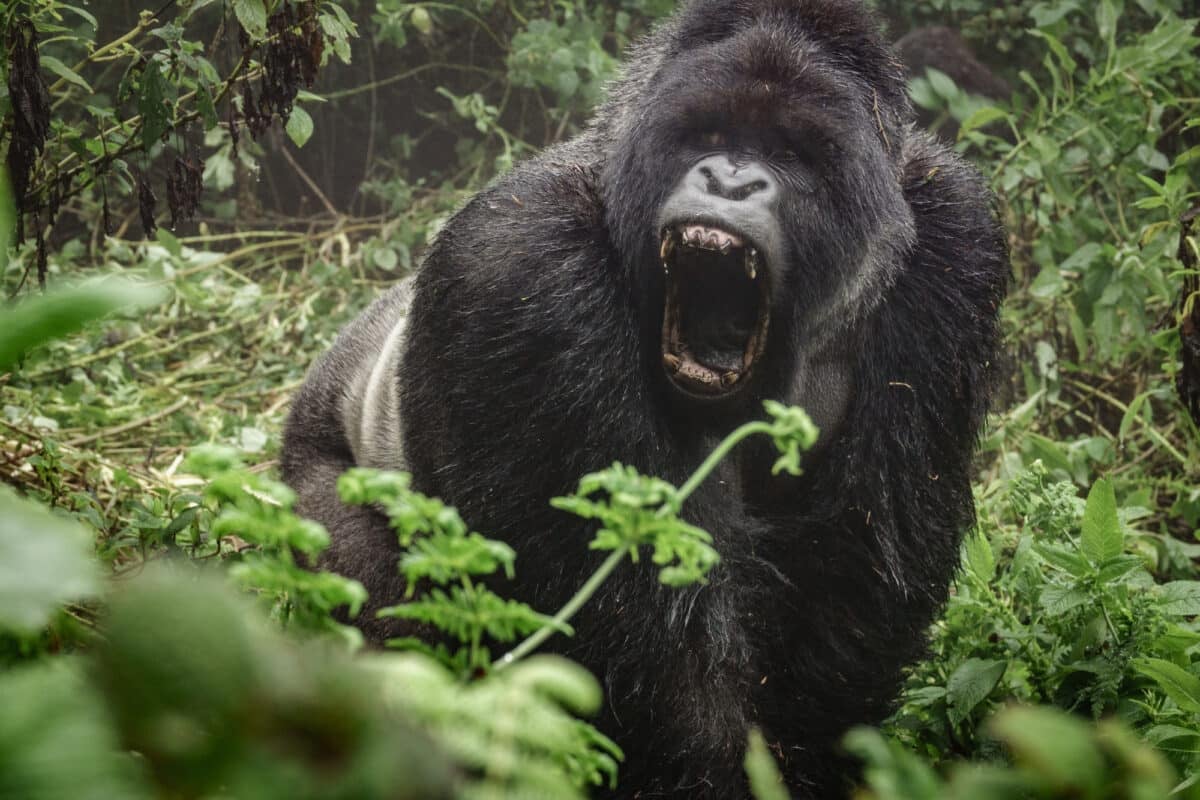
Gorillas
Gorillas are primarily herbivores and consume various plant-based foods, including fruits, leaves, and stems. In addition to their plant-based diet, gorillas consume insects, fungi, and small animals like snails.
The Blackbucks
In contrast, blackbucks are strict herbivores, mainly foraging on grasses, fruits, and leaves. They can extract water from their diet, allowing them to survive in arid conditions where water is scarce. The blackbucks have a highly efficient digestive system and can digest tough plants efficiently.
Predators and Prey
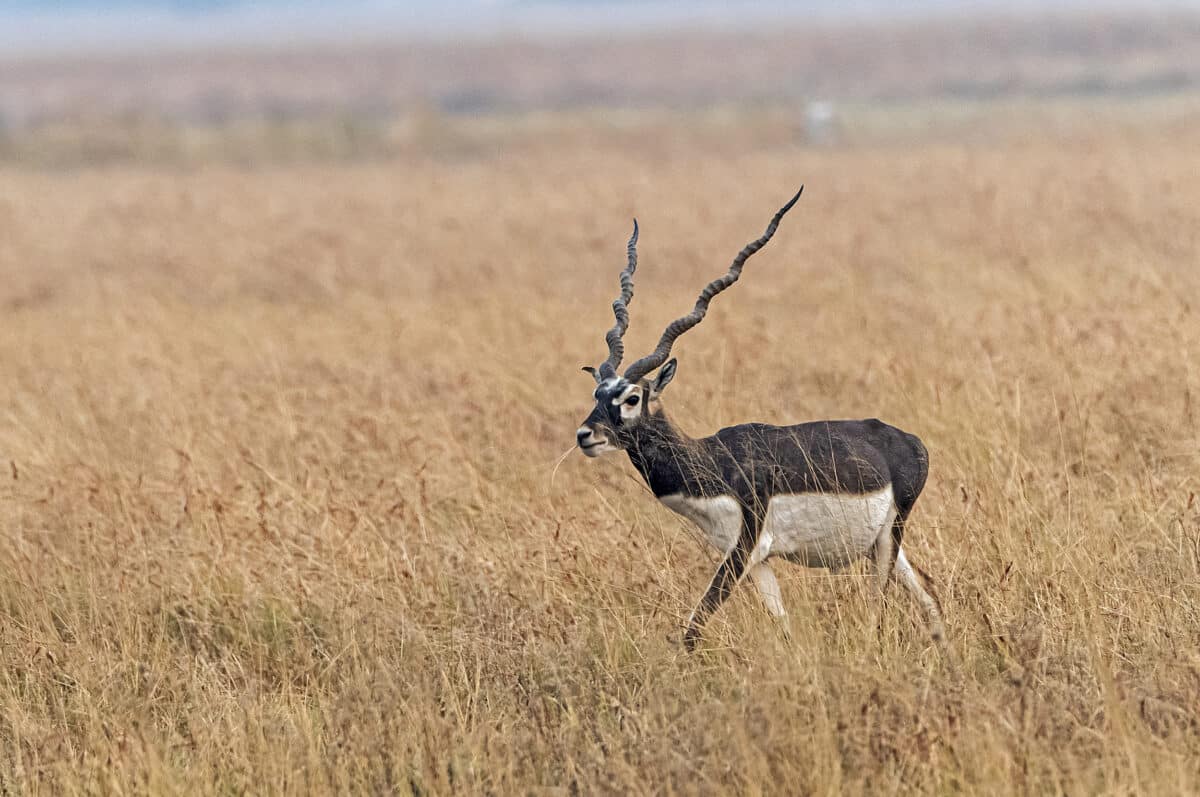
Gorillas
Gorillas have few natural predators due to their size and strength, but they may be preyed upon by large cats, such as leopards and lions, and crocodiles when they venture near rivers.
Additionally, Gorillas protect themselves and their young by living in groups and maintaining a strict social hierarchy. Moreover, they use physical displays such as chest-beating, charging, and vocalizations to ward off potential predators.
Blackbucks
On the other hand, blackbucks have numerous predators, such as leopards, hyenas, and wolves. Evidently, these predators take advantage of their speed and agility to catch them. The blackbucks use a unique behavior known as “stotting” to evade their predators.
Finally, this behavior involves leaping high and landing on all four legs to make themselves more visible and show their strength and agility.
Conservation Status
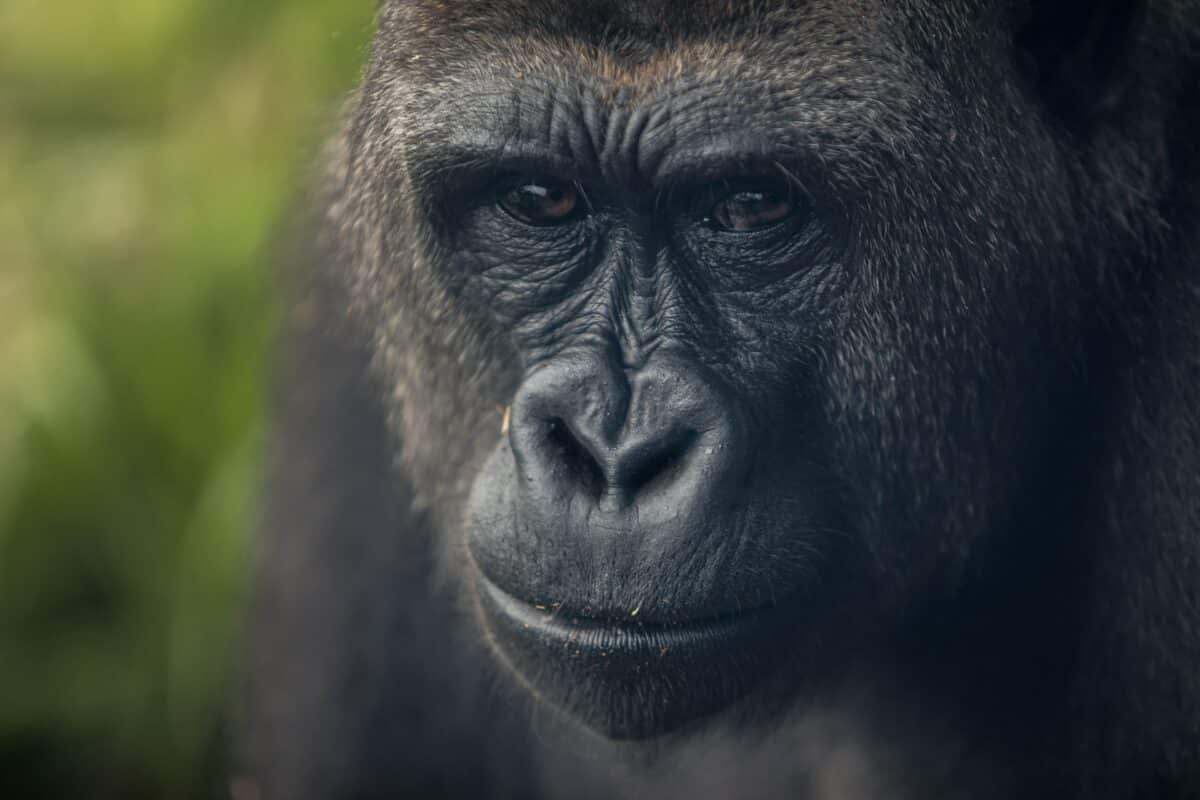
The conservation status of gorillas and blackbucks is critical, given the significant threats in their natural habitats.
Gorillas
Gorillas face various threats, including habitat loss, poaching, and disease. Their natural habitats, which comprise tropical forests and woodlands in Central and West Africa, are being destroyed due to deforestation and land conversion for agricultural and industrial use. Poaching of gorillas for their meat, medicinal value, and trophies has also threatened their survival.
Conservation efforts to protect gorillas include establishing national parks and protected areas, such as the Virunga National Park in the Democratic Republic of Congo, where the critically endangered mountain gorillas are protected.
The Blackbuck
Firstly, their habitats, which comprise grasslands and scrublands in the Indian subcontinent, are being converted for agricultural and industrial use.
Hunting blackbucks for sport and meat has also become a significant problem, with illegal hunting operations flourishing.
Conservation efforts include habitat restoration projects and the establishment of protected areas. For instance, the Velavadar Blackbuck National Park in Gujarat, India, was created to preserve blackbucks in their natural habitat.
Finally, other conservation strategies include strict law enforcement measures to curb hunting and other illegal activities.
Key Points

| Gorillas are herbivores and primarily feed on fruits, vegetables, and leaves. |
| Blackbucks are much smaller as compared to gorillas, weighing only about 60-75 pounds and standing at 2.5-3 feet tall. |
| The blackbuck is much smaller than gorillas, weighing only about 60-75 pounds and standing 2.5-3 feet tall. |
| Blackbucks are much smaller than gorillas, weighing only about 60-75 pounds and standing 2.5-3 feet tall. |
| Both animals have unique physical features that help them survive in their respective environments. |
Wrapping Up with Gorilla vs. Blackbuck
Gorillas and blackbucks are vastly different creatures in entirely different habitats. However, when compared, these animals are fascinating in their unique ways.
When we compare these two remarkable animals, we find several similarities in their diets and habits. Both gorillas and blackbucks are herbivorous, consuming fruits and vegetation for sustenance. They are social animals and usually prefer living in groups. Both animals have unique physical features that help them survive in their respective environments.
Despite the similarities, there are some notable differences between gorillas and blackbucks. Gorillas are much more giant and stronger than blackbucks, which allows them to defend themselves against potential threats.
Gorillas are highly intelligent and possess a complex social structure within their troops, which also helps them remain protected. On the other hand, the blackbuck are incredibly fast and agile, enabling them to avoid being preyed upon by predators. Their keen sense of hearing and sight serve as excellent defense mechanisms.
In conclusion, gorillas and blackbucks share similarities and differences that make them unique. While gorillas are more giant and intelligent, blackbucks are faster and more agile. Choosing one animal as superior isn’t easy since they have adapted differently to their surroundings. Both animals have equally essential roles in the ecosystem and must be protected.
Thanks for following along with me! I hope you enjoyed reading about these two entertaining animals. Next are African elephant vs. Elk (Wapiti), African elephant vs. Chimpanzee, and African Elephant vs. Bonobo.
Join our Forum for free today!

- Big Cats Love Mouthing Affection - July 22, 2024
- Kind Elephant Merciful To Lion Cubs - July 22, 2024
- Beachgoers Save Massive Shark Stranded In Florida - July 22, 2024

